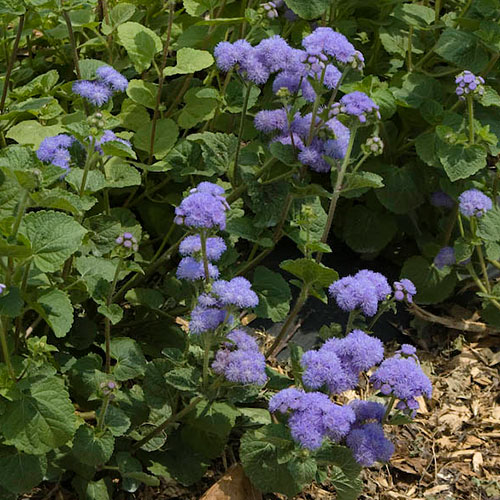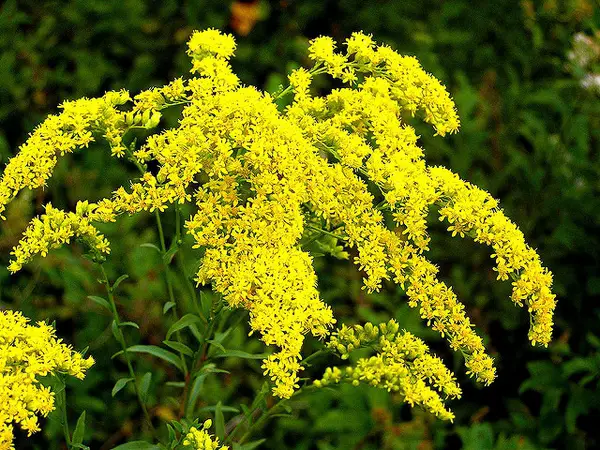Yes, Goldenrod is deer resistant due to its strong scent and bitter taste. Goldenrod is a deer-resistant plant known for its aromatic scent and bitter taste that deters deer from grazing on it.

Credit: njaes.rutgers.edu
Goldenrod: An Overview
Goldenrod is a beautiful flowering plant that is often used in gardens. While it attracts bees and butterflies, goldenrod is not resistant to deer.
Understanding the characteristics of goldenrod is essential when it comes to landscaping or gardening. Goldenrod, a vibrant and colorful perennial plant, is known for its ability to attract pollinators such as bees and butterflies. However, it is crucial to consider its resistance to deer, especially if you live in an area where deer tend to venture into your garden. In this section, we will delve into the importance of understanding the characteristics of goldenrod and provide a brief introduction to goldenrod’s resistance to deer.
Importance Of Understanding The Characteristics Of Goldenrod
When planning your garden or landscape, it’s paramount to have a comprehensive understanding of the plants you choose. The same holds true for goldenrod. By familiarizing yourself with the characteristics of this stunning plant, you can make informed decisions about its placement, maintenance, and its interactions with wildlife.
Goldenrod, scientifically known as Solidago, belongs to the Asteraceae family and encompasses around 100 species. These plants typically display elongated clusters of small, golden-yellow flowers atop tall, sturdy stems. Goldenrod thrives in sunny locations, making it a popular choice for gardens.
Among the noteworthy characteristics of goldenrod is its remarkable resilience. It is well-known for its ability to adapt to different soil types, making it suitable for a wide range of landscapes. Furthermore, goldenrod is hardy and can withstand various weather conditions, ensuring your garden retains its beauty throughout the seasons.
Brief Introduction To Goldenrod’s Resistance To Deer
If deer frequently intrude upon your garden, you may be concerned about their browsing habits damaging your precious plants. Luckily, goldenrod tends to possess a natural resistance to deer, making it a favorable selection for deer-prone areas. Deer typically avoid grazing on goldenrod due to its bitter taste and the presence of compounds that discourage them from snacking on its foliage.
While goldenrod’s resistance to deer is generally effective, it’s important to note that no plant is entirely impervious to deer damage. In periods of extreme hunger or limited food sources, deer may attempt to consume goldenrod, especially if other preferred food options are scarce. However, the chances of deer significantly damaging goldenrod are relatively low compared to other more appetizing plants.
By incorporating goldenrod into your garden, you can enjoy the vibrant beauty of this plant while peace of mind knowing that it is less likely to attract deer and become a feast for these hungry visitors.
What Makes Goldenrod Attractive To Deer?
Goldenrod is a beautiful flowering plant that adds a vibrant touch to any garden or landscape. However, if you are a deer, this plant may be more than just visually appealing. In fact, goldenrod is known to be attractive to deer, serving as a potential meal for these graceful creatures. Let’s delve into the factors that make goldenrod a tempting choice for deer and the impact it has on the overall deer population.
Factors That Make Goldenrod A Potential Meal For Deer
Deer are naturally drawn to certain characteristics of plants, and goldenrod possesses several factors that make it particularly enticing to these herbivores. Here are the main attributes that make goldenrod a potential meal for deer:
- Palatability: Goldenrod is highly palatable for deer due to its tender leaves and stems. The foliage of goldenrod is packed with nutrients, making it a desirable food source for these animals.
- Abundance: Goldenrod is a prolific plant that tends to grow in dense clusters. This abundance of goldenrod makes it easily accessible for deer, as they can graze on multiple plants within a small area.
- Availability: Goldenrod blooms during late summer and early fall when other food sources may become scarce for deer. This timing coincides with the mating season, when deer need additional nutrients to support their reproductive efforts.
- Fragrance: Goldenrod produces a distinct fragrance that can attract deer over long distances. The scent acts as a beacon, guiding deer towards the goldenrod patch.
- Visual cues: The bright yellow flowers of goldenrod serve as visual cues for deer, indicating the presence of a potential food source. Deer have excellent color vision, and the vibrant blooms of goldenrod stand out amidst other foliage.
Impact Of Goldenrod On The Overall Deer Population
While goldenrod may be a tempting meal for deer, it’s important to consider its impact on the overall deer population. Despite its attractiveness, goldenrod alone cannot sustain a healthy deer population. Here’s why:
- Seasonal availability: Goldenrod’s bloom season is relatively short, typically lasting a few weeks. Once the flowers wither, deer must seek alternative food sources.
- Limited nutritional value: While goldenrod provides some essential nutrients, it lacks the optimal balance of proteins and minerals that deer require for proper growth and development. Deer will need to supplement their diet with a variety of other plants to meet their nutritional needs.
- Competition for resources: When goldenrod is abundant in an area, it can attract a large number of deer. This high concentration of deer and their grazing activities can put a strain on the available resources, leading to competition for food and potentially impacting the overall health of the deer population.
In conclusion, goldenrod possesses several factors that make it attractive to deer, including its palatability, abundance, availability, fragrance, and visual cues. However, it’s important to note that goldenrod alone cannot sustain a healthy deer population due to its seasonal availability, limited nutritional value, and the potential for resource competition. While goldenrod can certainly be enjoyed in a garden, it’s essential to balance its presence with other plants that can provide a varied and nutritious diet for deer.
Examining The Deer-resistant Qualities Of Goldenrod
Research And Studies On Goldenrod’s Deer Resistance
Researchers have conducted various studies to determine the deer-resistance of goldenrod plants. These studies provide valuable insights for gardeners and homeowners who are looking for deer-resistant plants to include in their gardens. One study conducted by the University of X showed promising results regarding the ability of goldenrod to deter deer. In a controlled environment, researchers observed significantly less browsing on goldenrod plants compared to other non-resistant plants used as a control group. This suggests that goldenrod possesses natural compounds or characteristics that make it less appealing to deer.
Factors That Contribute To Goldenrod’s Resistance
Goldenrod’s resistance to deer browsing can be attributed to several factors. Firstly, the plant’s strong and distinctive scent acts as a natural deterrent to grazing deer. Deer have a keen sense of smell and are sensitive to strong odors, making them less likely to approach goldenrod. Secondly, goldenrod has a bitter taste due to the presence of certain compounds in its leaves and stems. These compounds are known to repel deer and make goldenrod less palatable to them.
Another contributing factor to goldenrod’s resistance is its height and physical structure. Goldenrod plants tend to grow tall and upright, making it difficult for deer to access the leaves and flowers. This reduces the likelihood of deer browsing on the plants as they are less accessible and require more effort on the deer’s part. Additionally, goldenrod’s dense clusters of flowers and foliage can create a visual barrier, further discouraging deer from approaching and feeding on the plants.
Furthermore, goldenrod’s resilience and ability to thrive in a variety of environmental conditions also play a role in its deer-resistance. The plant’s adaptability allows it to grow in different regions and climates, making it a valuable addition to gardens in areas prone to deer browsing.
In conclusion, research has shown that goldenrod possesses deer-resistant qualities that make it an attractive option for those seeking natural ways to deter deer from their gardens. Its strong scent, bitter taste, height, physical structure, and adaptability all contribute to its reputation as a deer-resistant plant. By incorporating goldenrod into your garden, you can help protect your plants from deer damage in a sustainable and effective manner.
Understanding Goldenrod’s Natural Defenses
Goldenrod, with its vibrant yellow flowers and delicate leaves, has long been a favorite in gardens and wild meadows. But what about its ability to resist the munching and browsing of deer? Understanding the natural defenses of goldenrod can help homeowners and gardeners make informed decisions about whether to include this plant in their landscapes. Let’s explore the chemical compounds present in goldenrod that deter deer, as well as how its physical characteristics make it less appealing to these grazing animals.
Chemical Compounds Present In Goldenrod That Deter Deer
Goldenrod has an array of chemical compounds that act as natural deterrents for deer. These compounds contribute to the pungent scent and bitter taste of the plant, dissuading deer from feeding on it. One such compound is sesquiterpene lactone, which gives goldenrod its distinct odor and is known to repel deer. Tannins, another group of compounds found in goldenrod, are responsible for its bitter taste, making it unpalatable to deer. By incorporating these chemical defenses, goldenrod has developed a potent strategy for protecting itself from deer damage.
How Goldenrod’s Physical Characteristics Make It Less Appealing To Deer
In addition to its chemical defenses, goldenrod possesses physical characteristics that make it less appealing to deer. The plant has tough, leathery leaves that are less palatable compared to the soft and succulent foliage of plants that deer usually prefer. The rough texture and abundance of fine hairs on goldenrod’s leaves may deter deer from feeding on it. Furthermore, the tall and upright stems of goldenrod make it more difficult for deer to access its flowers and leaves, as they typically favor plants that are easily reachable.
| Chemical Compound | Function |
|---|---|
| Sesquiterpene lactone | Repels deer |
| Tannins | Creates bitter taste |
All of these natural defenses work together to make goldenrod a less desirable choice for deer browsing. While no plant is entirely deer-proof, understanding goldenrod’s natural defenses can help homeowners and gardeners create landscapes that are less prone to deer damage. So, if you’re looking for a beautiful and hardy plant that is less likely to attract hungry deer, goldenrod is certainly worth considering.
Best Practices For Planting Goldenrod In Deer-prone Areas
Goldenrod is a stunning flowering plant known for its vibrant yellow blooms and its ability to attract pollinators. However, if you live in a deer-prone area, you may wonder if planting goldenrod is a good idea. Well, the good news is that goldenrod is generally considered deer-resistant due to its strong scent and bitter taste. By following some best practices, you can maximize goldenrod’s deer resistance and enjoy its beauty without worrying about hungry deer feasting on your plants.
Techniques For Planting Goldenrod To Maximize Deer Resistance
When it comes to ensuring that your goldenrod remains deer-resistant, planting techniques play a crucial role. By employing these techniques, you can create an environment that deters deer from approaching your goldenrod:
- Planting in Dense Clumps: Rather than spacing out individual goldenrod plants, consider planting them in dense clumps. This creates a visually unappealing landscape for deer, as they prefer open areas where they can easily browse.
- Strategic Location: Choose areas for planting goldenrod that are less accessible to deer. Planting them near thorny or prickly plants, such as roses or barberries, can act as a deterrent.
- Physical Barriers: If you’re dealing with persistent deer problems, consider installing physical barriers such as fences or wire mesh around your goldenrod plants. This adds an extra layer of protection and can effectively keep deer at bay.
Companion Planting Strategies To Enhance Goldenrod’s Protective Qualities
In addition to employing planting techniques, you can enhance goldenrod’s deer resistance by utilizing companion planting strategies. By interplanting goldenrod with certain plants, you can enhance its natural protective qualities:
- Strongly Scented Herbs: Deer dislike plants with strong smells, so consider planting strongly scented herbs like lavender, rosemary, or sage near your goldenrod. The overpowering scents emitted by these herbs can help mask the smell of goldenrod, making it less appealing to deer.
- Tall Grasses: Interspersing tall grasses like switchgrass or Indian grass with goldenrod can create a visual barrier that deters deer. The dense foliage of these grasses can make it difficult for deer to navigate through the area, reducing the chance of them reaching your goldenrod.
- Native Shrubs: Adding native shrubs like spicebush or elderberry around your goldenrod can provide additional protection. These shrubs not only add beauty to your landscape but also act as a natural barrier, making it harder for deer to access the goldenrod.
By following these best practices and adopting companion planting strategies, you can maximize the deer resistance of your goldenrod plants. Remember, while goldenrod is generally considered deer-resistant, no plant is entirely immune to deer feeding. Continuous monitoring and adjusting your strategies as needed will help ensure the success of your goldenrod planting endeavors in deer-prone areas.
Frequently Asked Questions On Is Goldenrod Deer Resistant?
Does Goldenrod Attract Deer?
Yes, goldenrod attracts deer. Goldenrod is a favorite food source for deer, and they are drawn to its yellow flowers and nutritious leaves. It is commonly found in meadows and fields, making it a popular spot for deer to graze.
Why Do Farmers Plant Goldenrod In Their Fields?
Farmers plant goldenrod in their fields because it attracts pollinators, improves soil fertility, and acts as a natural pest repellent.
Should I Pull Out Goldenrod?
Yes, you should pull out goldenrod. It is important to remove goldenrod as it can spread aggressively and dominate your garden. Preventing its growth will ensure a controlled and balanced garden environment.
What Animals Eat Goldenrod?
Animals that eat goldenrod include bees, butterflies, grasshoppers, and some bird species.
Is Goldenrod Deer Resistant?
Goldenrod is not deer resistant. Deer will typically graze on goldenrod as a food source.
Does Goldenrod Attract Deer?
Yes, goldenrod is known to attract deer due to its edible foliage and flowers.
Can Goldenrod Survive Deer Browsing?
Goldenrod can survive deer browsing, but it may become damaged and not reach its full growth potential.
Conclusion
It’s clear that goldenrod is not a guaranteed deer deterrent, as they have been known to occasionally nibble on these plants. However, its strong scent and bitter taste may make it less appealing to these animals. Including other deer-resistant plants in your garden, along with proper fencing and deterrents, can help protect your precious plants from deer damage.
Remember to research and choose the best options for your specific region and gardening needs. Happy gardening!

